Basic 3-Floor Lift
Categories: Automation TechnologiesTrainer has been designed to simulate a 3-floor lift commonly used in multi-storey buildings. The trainer reproduces all different components and features of an actual lift, such as the opening/closin...
Product
Description
Trainer has been designed to simulate a 3-floor lift commonly used in multi-storey buildings. The trainer reproduces all different components and features of an actual lift, such as the opening/closing of the doors, a variable speed motor to control the movement, presence sensors at each floor, as well as alarm and emergency buttons. The cabin is fixed on a mobile cart driven by a low voltage DC motor controlled by pulleys. Call buttons are available on a panel at each floor. LEDs indicate the elevator status (free/busy). Switches simulate the door status (open/closed) at each floor. Other LEDs located at each floor signal the current position of the cabin. Each panel includes a LED to signal the possible activation of the alarm button in the cabin.
The cabin operating panel includes:
• 3 LEDs signaling the current position of the lift
• 5 call/stop/alarm buttons
• A LED and a buzzer signal the alarm situation
• A LED simulates lighting in the cabin
• A switch simulates the cabin door status (open/closed)
• More LEDs signal the cabin door status (open/closed)
• Micro-switches are used as limit switches to protect the engine in case the cabin runs off track
• Micro-switches at each floor are used as starting point of the deceleration and of the cabin stop
• 3 relays with LEDs control the motor direction and speed
A silk-screen panel reproduces the structure of the lift and features alerts, calls, stops and direction of the cabin. All process inputs / outputs are connected independently to the PLC by means of Ø 2 mm terminals The aim of the equipment is to teach students how to program a PLC to control the operation of a lift.
TRAINING PROGRAM:
• System analysis
• System I/O setup
• Process flow diagram generation
• Step-by-step sequence
• Logical process flow diagram generation
• Evaluation of potential problems
• Program development
TECHNICAL SPECIFICATIONS:
Electric characteristics
• 10 limit switches
• 9 LEDs signaling the cabin at the floor
• 3 LEDs signaling the cabin speed and direction of travel (up/down)
• 4 requested floor buttons
• 9 LEDs signaling the lift status at the floor (free/busy/alarm)
• 3 switches simulating if the cabin door status at the floor (open /closed)
• 6 LEDs signaling the cabin door status at the floor (open / closed)
• 1 diverter switch reproducing the open /closed cabin door status
• 2 LEDs signaling if the cabin door is open or closed
• 1 LED to light the cabin
• 3 floor request buttons
• 1 emergency stop button
• 1 alarm button
• 3 LEDs signaling the position at the floors
• 1 LED signaling an alarm status
• 1 Buzzer signaling an alarm status
• 1 DC gear motor
• Connection to the PLC by means of Ø 2 mm terminals
Mechanic characteristics
• Silk screen synoptic
• Vertical aluminum frame with an external box for the interface
• DC gear motor coupled to a system of pulleys with a belt for the cabin motion
A PLC (not included) is needed to control the process. Minimum requirements:
• 20 24 Vcc digital inputs
• 14 24 Vcc 0,5 A digital outputs
Suggested PLC:
• n°1 PLC training panel with programming and simulation software
Alternative:
• n°1 PLC training panel
quick overview :
Trainer has been designed to simulate a 3-floor lift commonly used in multi-storey buildings. The trainer reproduces all different components and features of an actual lift, such as the opening/closing of the doors, a variable speed motor to control the movement, presence sensors at each floor, as well as alarm and emergency buttons. The cabin is fixed on a mobile cart driven by a low voltage DC motor controlled by pulleys. Call buttons are available on a panel at each floor. LEDs indicate the elevator status (free/busy). Switches simulate the door status (open/closed) at each floor. Other LEDs located at each floor signal the current position of the cabin. Each panel includes a LED to signal the possible activation of the alarm button in the cabin.
The cabin operating panel includes:
• 3 LEDs signaling the current position of the lift
• 5 call/stop/alarm buttons
• A LED and a buzzer signal the alarm situation
• A LED simulates lighting in the cabin
• A switch simulates the cabin door status (open/closed)
• More LEDs signal the cabin door status (open/closed)
• Micro-switches are used as limit switches to protect the engine in case the cabin runs off track
• Micro-switches at each floor are used as starting point of the deceleration and of the cabin stop
• 3 relays with LEDs control the motor direction and speed
A silk-screen panel reproduces the structure of the lift and features alerts, calls, stops and direction of the cabin. All process inputs / outputs are connected independently to the PLC by means of Ø 2 mm terminals The aim of the equipment is to teach students how to program a PLC to control the operation of a lift.
TRAINING PROGRAM:
• System analysis
• System I/O setup
• Process flow diagram generation
• Step-by-step sequence
• Logical process flow diagram generation
• Evaluation of potential problems
• Program development
TECHNICAL SPECIFICATIONS:
Electric characteristics
• 10 limit switches
• 9 LEDs signaling the cabin at the floor
• 3 LEDs signaling the cabin speed and direction of travel (up/down)
• 4 requested floor buttons
• 9 LEDs signaling the lift status at the floor (free/busy/alarm)
• 3 switches simulating if the cabin door status at the floor (open /closed)
• 6 LEDs signaling the cabin door status at the floor (open / closed)
• 1 diverter switch reproducing the open /closed cabin door status
• 2 LEDs signaling if the cabin door is open or closed
• 1 LED to light the cabin
• 3 floor request buttons
• 1 emergency stop button
• 1 alarm button
• 3 LEDs signaling the position at the floors
• 1 LED signaling an alarm status
• 1 Buzzer signaling an alarm status
• 1 DC gear motor
• Connection to the PLC by means of Ø 2 mm terminals
Mechanic characteristics
• Silk screen synoptic
• Vertical aluminum frame with an external box for the interface
• DC gear motor coupled to a system of pulleys with a belt for the cabin motion
A PLC (not included) is needed to control the process. Minimum requirements:
• 20 24 Vcc digital inputs
• 14 24 Vcc 0,5 A digital outputs
Suggested PLC:
• n°1 PLC training panel with programming and simulation software
Alternative:
• n°1 PLC training panel
Product
Reviews
add Review
reviews
No Review Yet.
Copyrights © 2025 All Rights Reserved by Atico

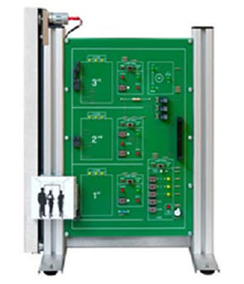




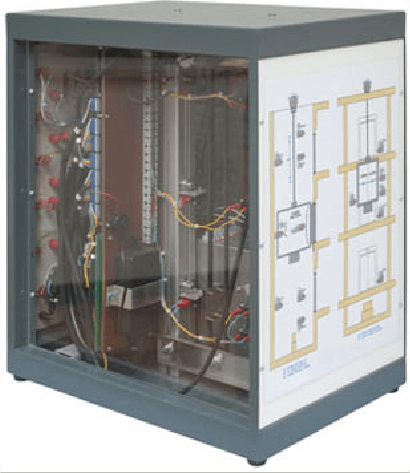


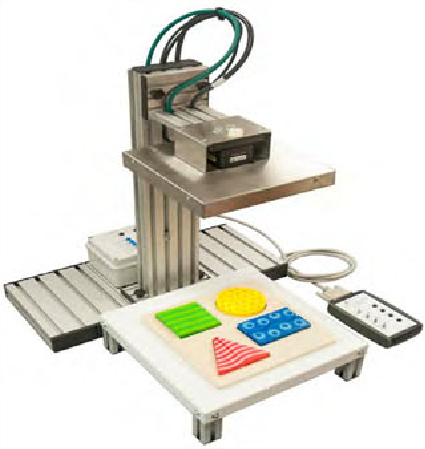

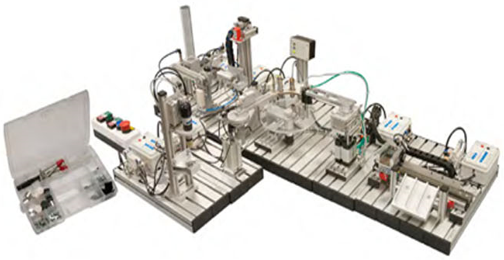
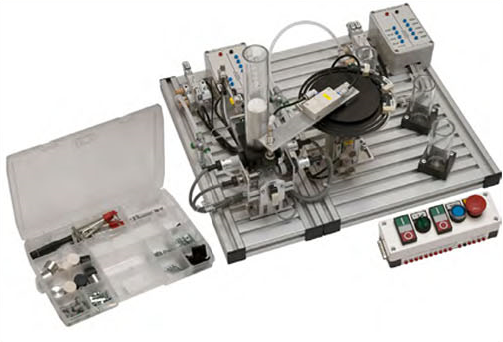
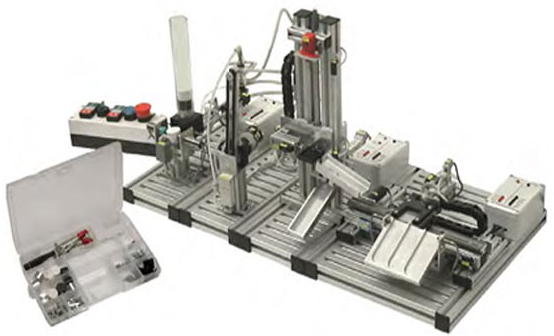
Product
Reviews
add Review
reviews
No Review Yet.